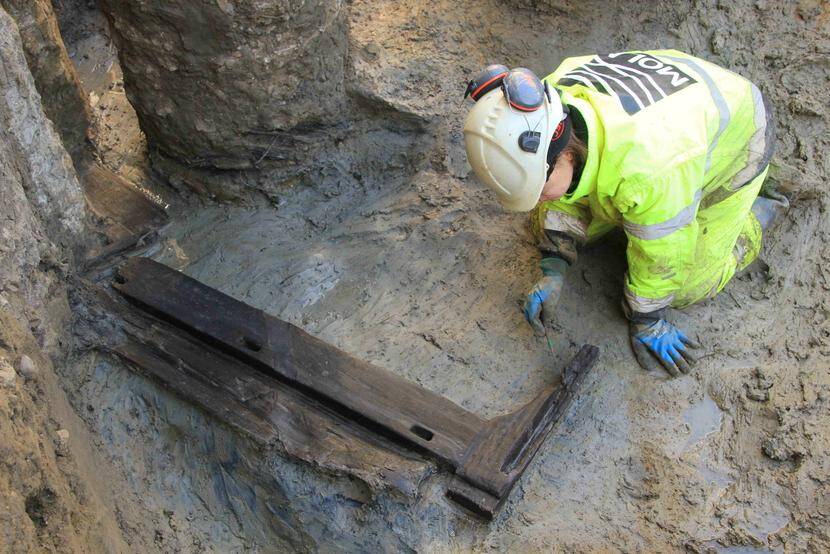Pompeii scrolls deciphered using AI, seventh-century armored warrior unearthed in Hungary, Roman funerary bed found in London.
2,000-Year-Old Roman Scroll Singed Shut By The Eruption Of Mount Vesuvius Decoded By Three Students Using AI

Vesuvius ChallengeStudents Youssef Nader of Germany, Luke Farritor of the U.S., and Julian Schilliger of Switzerland collaborated to decode more than 2,000 letters of this 2,000-year-old scroll that had been singed shut by the eruption of Mount Vesuvius that destroyed Pompeii and neighboring cities in present-day Italy in 79 C.E.
Using CT scans and AI, three students have just deciphered the text of a scroll that was scorched shut by the eruption of Mount Vesuvius in 79 C.E. Believed to have been written by the Epicurean philosopher Philodemus, the scroll is a treatise on the nature of pleasure as derived from sources like music and food, particularly capers.
Calling this research “the start of a revolution,” researchers believe such technology can be used to decipher the thousands of ancient scrolls sitting in museums’ back rooms around the world, not to mention the countless papyri wrapped around Egyptian mummies.
See more here.
Remains Of Seventh-Century Avar Warrior With Stunningly Intact Armor Unearthed In Hungary

Déri MuseumThis Avar warrior belonged to the nomadic group from the steppes of Central Asia who ruled over much of what is now Hungary during the Early Middle Ages.
Around 1,400 years ago, an Avar warrior was laid to rest with his weapons and horse. Now, archaeologists in Hungary have come across his remains — and his shockingly well-preserved set of lamellar armor.
To date, the armor represents only the second complete example of lamellar armor found in the country.
Dig deeper in this report.
Archaeologists Unearth The First Fully Intact Roman Funerary Bed In London

MOLAArchaeologists unearthing the Roman funerary bed.
Archaeologists excavating a construction site in London recently unearthed a fully intact Roman funerary bed, along with skeletal remains and five oak coffins.
The excavation site, which is near Holborn Viaduct in London, will eventually be turned into an office space for the Hogan Lovells law firm. Right now, though, the former Roman cemetery is revealing 2,000 years of London’s history.
Read on here.





